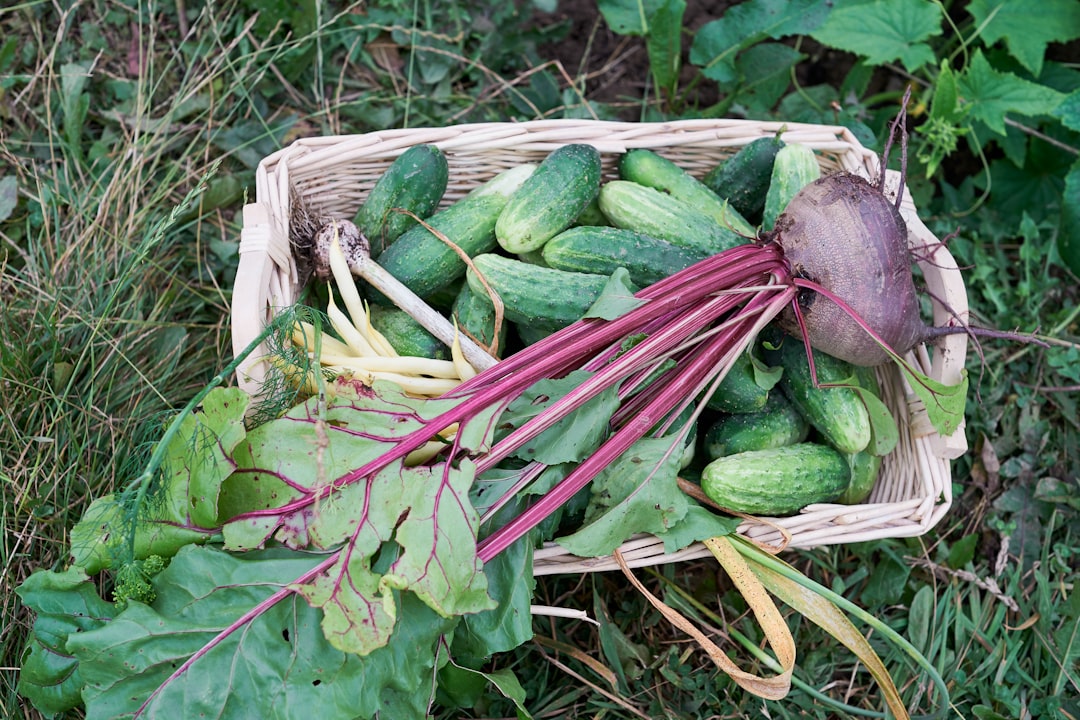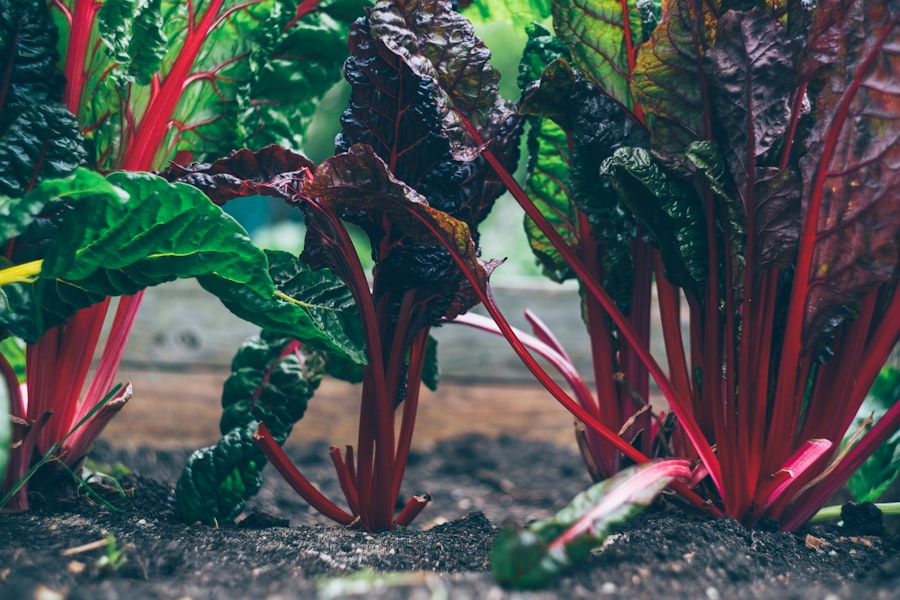Garlic Harvesting: When to Pick for Optimal Flavor

Garlic is a staple ingredient in many cuisines around the world. Its distinct flavor and aroma can enhance the taste of any dish, making it a must-have in every kitchen. However, not many people are aware of the process of garlic harvesting and its importance. Harvesting garlic at the right time is crucial to ensure that it develops its full flavor and stores well for future use.
Understanding the Growth Cycle of Garlic
Garlic goes through several stages of growth before it is ready to be harvested. It starts with planting individual cloves in the soil, which then sprout and develop into bulbs. The first stage is the vegetative stage, where the garlic plant focuses on growing its leaves and roots. This stage is crucial for the plant to establish a strong foundation.
The second stage is the bulbing stage, where the garlic plant starts to form bulbs underground. During this stage, it is important to provide adequate water and nutrients to support bulb development. The size of the bulbs will depend on the variety of garlic and the growing conditions.
The final stage is the maturation stage, where the garlic bulbs reach their full size and flavor. This is when the garlic is ready to be harvested. Harvesting too early can result in underdeveloped bulbs, while harvesting too late can lead to overripe bulbs that may not store well.
Factors Affecting Garlic Flavor
Several factors can affect the flavor of garlic during harvesting. The first factor is the variety of garlic being grown. Different varieties have different flavor profiles, ranging from mild to pungent. It is important to choose a variety that suits your taste preferences.
Another factor is the growing conditions. Garlic thrives in well-drained soil with plenty of organic matter. The soil pH should be slightly acidic, around 6.0 to 7.0, for optimal growth and flavor development. Adequate sunlight and water are also essential for the garlic plant to reach its full potential.
Lastly, the timing of the harvest can greatly impact the flavor of garlic. Harvesting garlic at the right time ensures that it has developed its full flavor and aroma. Waiting too long can result in a stronger, more pungent flavor, while harvesting too early can result in a milder taste.
How to Identify the Right Time for Harvesting Garlic
| Factors to Consider | Optimal Time for Harvesting Garlic |
|---|---|
| Number of leaves | When the lower leaves turn yellow and dry out |
| Garlic variety | Refer to the specific variety’s recommended harvesting time |
| Soil moisture | Harvest when the soil is dry to avoid damaging the bulbs |
| Weather conditions | Harvest on a dry day to prevent mold growth and ensure proper curing |
| Bulb size | Harvest when the bulbs are fully formed and have reached their maximum size |
Knowing when to harvest garlic is crucial to ensure that it has reached its peak flavor and storage potential. There are several signs to look out for to determine if garlic is ready for harvesting. The first sign is the appearance of the leaves. When the lower leaves start to turn yellow and dry out, it is a good indication that the garlic is ready to be harvested.
Another sign is the condition of the garlic bulbs. The bulbs should be firm and plump, with tightly wrapped cloves. If the cloves start to separate or become loose, it may be a sign that the garlic is overripe and past its prime.
Lastly, you can also perform a taste test to determine if the garlic is ready for harvesting. Take a small clove and taste it raw. If it has a strong, pungent flavor, it is a good indication that the garlic is ready to be harvested. However, if it tastes mild or lacks flavor, it may need more time to develop.
Preparing for Garlic Harvesting
Before harvesting garlic, it is important to prepare the soil and garlic bed to ensure optimal growth and flavor development. Start by clearing any weeds or debris from the garlic bed. Weeds can compete with garlic for nutrients and water, affecting its growth and flavor.
Next, amend the soil with organic matter such as compost or well-rotted manure. This will improve soil fertility and drainage, creating an ideal environment for garlic growth. It is also recommended to add a balanced fertilizer to provide the necessary nutrients for the garlic plants.
Lastly, ensure that the garlic bed is well-watered before harvesting. Adequate moisture is essential for the garlic bulbs to develop their full flavor. However, avoid overwatering as it can lead to rotting or fungal diseases.
Tools Needed for Harvesting Garlic

Harvesting garlic requires a few essential tools to make the process easier and more efficient. The first tool you will need is a garden fork or shovel. This will be used to loosen the soil around the garlic bulbs and lift them out of the ground.
A pair of gardening gloves is also recommended to protect your hands from dirt and potential injuries. Additionally, a sharp knife or pruning shears will be needed to trim the roots and foliage of the garlic plants.
Lastly, you will need a drying rack or mesh bag to cure and store the harvested garlic. This will allow air circulation around the bulbs, preventing them from rotting or molding.
Techniques for Harvesting Garlic
There are several techniques for harvesting garlic, each with its own pros and cons. The first technique is hand-pulling, which involves gently pulling the garlic bulbs out of the ground by hand. This method is suitable for small-scale growers and allows for careful handling of the bulbs.
Another technique is using a garden fork or shovel to loosen the soil around the garlic bulbs and lift them out of the ground. This method is more efficient for larger-scale operations and can save time and effort.
A third technique is cutting the foliage of the garlic plants about an inch above the bulbs. This allows the bulbs to dry down in the ground before harvesting. This method is useful in areas with high humidity or wet conditions, as it reduces the risk of rotting or molding during curing.
Storing Garlic After Harvesting
Proper storage is crucial to ensure that harvested garlic retains its flavor and quality for an extended period of time. The first step is to cure the garlic bulbs. This involves drying them in a well-ventilated area with low humidity for about two to three weeks. This allows the outer layers of the bulbs to dry and form a protective skin.
After curing, trim the roots and foliage of the garlic bulbs, leaving about an inch of stem attached. This will help prevent moisture loss and protect the cloves during storage.
Next, choose a suitable storage method for your garlic. One option is to store the bulbs in a mesh bag or basket in a cool, dry place such as a pantry or cellar. Make sure to keep the garlic away from direct sunlight and moisture, as this can cause sprouting or spoilage.
Another option is to braid the garlic bulbs together and hang them in a well-ventilated area. This not only provides an attractive display but also allows for good air circulation around the bulbs.
Common Mistakes to Avoid When Harvesting Garlic
There are several common mistakes that people make when harvesting garlic, which can affect its flavor and storage potential. One common mistake is harvesting garlic too early. Garlic needs time to develop its full flavor and size, so it is important to be patient and wait until the leaves start to turn yellow and dry out.
Another mistake is leaving garlic in the ground for too long. Overripe garlic can have a stronger, more pungent flavor that may not be desirable for some dishes. It can also lead to cloves separating or becoming loose, making it difficult to store.
Lastly, improper curing and storage can also affect the quality of harvested garlic. It is important to provide adequate air circulation and keep the garlic away from moisture and direct sunlight to prevent sprouting or spoilage.
Tips for Maximizing Garlic Flavor During Harvesting
To maximize the flavor of harvested garlic, there are several tips that you can follow during the harvesting process. First, make sure to harvest garlic at the right time when the leaves start to turn yellow and dry out. This is when the garlic has developed its full flavor and aroma.
Second, handle the garlic bulbs with care to avoid bruising or damaging them. Bruised garlic can develop off-flavors and spoil more quickly.
Third, avoid washing the garlic bulbs after harvesting. Washing can remove the protective outer layers and increase the risk of mold or rotting during storage. Instead, gently brush off any excess dirt or debris.
Lastly, store garlic in a cool, dry place with good air circulation. This will help preserve its flavor and quality for a longer period of time.
Harvesting garlic is an important process that ensures the development of its full flavor and storage potential. Understanding the growth cycle of garlic, identifying the right time for harvesting, and properly preparing the soil and garlic bed are crucial steps in maximizing the flavor of harvested garlic. Using the right tools and techniques, as well as avoiding common mistakes, can further enhance the quality of harvested garlic. By following these guidelines and tips, you can enjoy the full flavor and aroma of freshly harvested garlic in your culinary creations.



